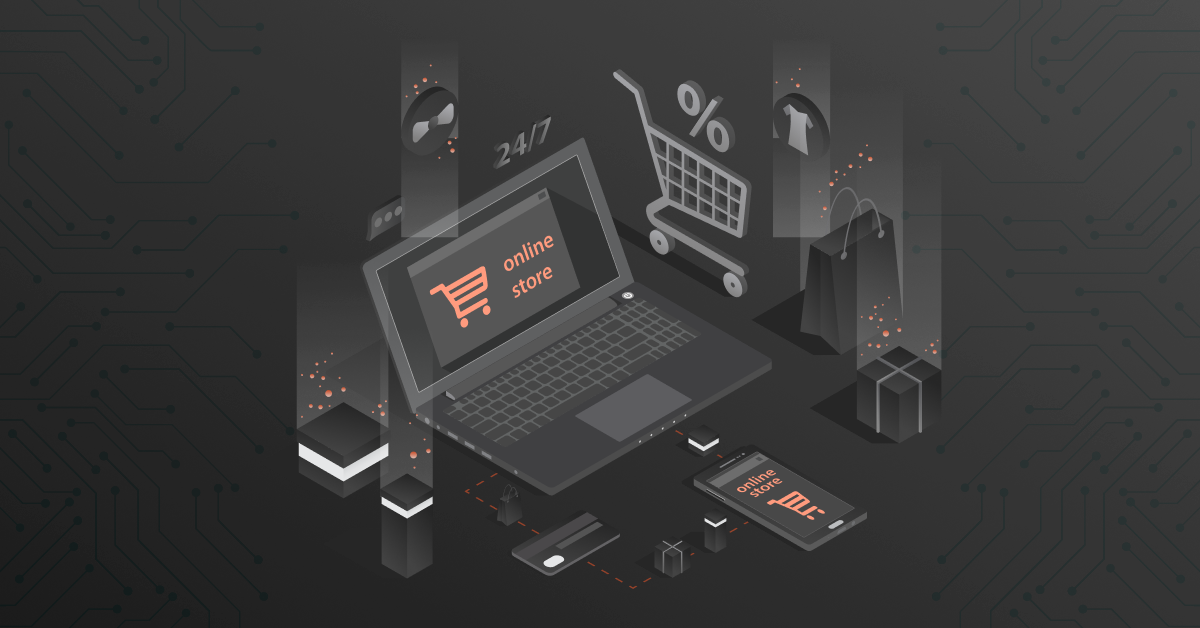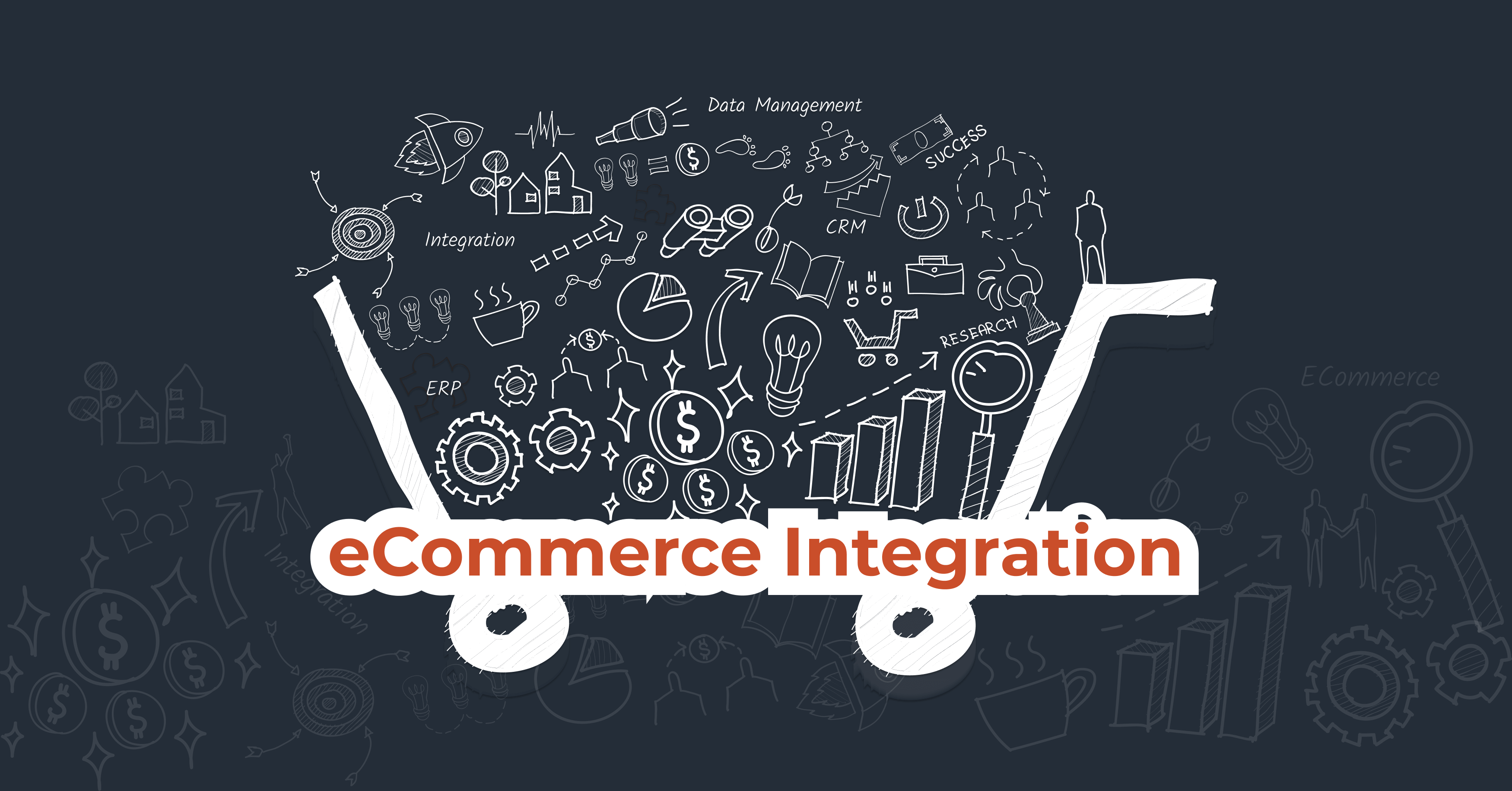Digital transformation is required because technology evolves really fast. It helps projects get done much quicker than before. Everything is speeding up, and there’s a lot of data available, which opens up new opportunities and changes business goals.
For businesses, especially those in ecommerce, digital transformation is crucial. It helps businesses make the customer experience better, innovate faster to keep up with the quick pace of business, and learn more about customer behavior.
What is Driving Digital Transformation in eCommerce
Here are some of the key reasons why an ecommerce business should consider digital transformation:
1. Customer Experience & Expectations: Seamless and personalized online shopping experiences are now an expectation. Adapting to digital trends and utilizing customer data ensures that your teams and site are well-equipped to meet these expectations.
2. Cost Management: Digital technology helps streamline daily operations, resulting in cost savings and improved productivity. Technological advancements like machine learning and artificial Intelligence take this automation to a whole new level, reducing reliance on human resources.
3. Disruptive Businesses: Industry leaders like Amazon and Google have reshaped traditional practices, compelling other businesses to adapt. Social media platforms, including Facebook and Twitter, have also revolutionized how businesses engage with customers in real time.
4. External Global Factors: External influences like social, health, political, and environmental factors play a significant role in digital transformation. The COVID-19 pandemic, for instance, has accelerated investment in digital initiatives. Environmental considerations, such as the threat of natural hazards, drive the demand for digital solutions in risk management.
Recommended reads: 16 Essential Roles in eCommerce That Are Here to Stay
How Digital Transformation Impacts Key Industries
Distribution
- Digital transformation has streamlined distribution processes. Learn more about Digital transformation in distribution industry
- Advanced technologies are enhancing inventory management and order fulfillment.
- Real-time tracking and analytics improve overall distribution efficiency.
Shipping and Logistics
- Quicker delivery times are achieved, with same-day operating models becoming more prevalent.
- Smart warehouses operate 24/7, optimizing efficiency.
- Autonomous delivery vehicles, powered by cloud computing, are transforming logistics.
Consumer Retail
- Platforms now recommend related products during checkout.
- Automated supply chain management instantly updates websites when products are out of stock.
- Self-checkout systems expedite the checkout process, enhancing user satisfaction.
Enterprise Software
- Automation is widespread, making Software as a Service (SaaS) common and streamlining workflows.
- Improved tools foster better person-to-person communication.
- The cloud has revolutionized how companies utilize third-party software
Healthcare and Pharmaceuticals
- Patients have greater access to health information.
- The proliferation of Internet of Things (IoT) devices, such as wearables and robot-assisted surgeries, improves real-time monitoring of vital signs.
- Electronic health records ensure accurate management of medical histories.
Telecommunications
- Service offerings, like cable TV and internet, have expanded.
- 5G service is being rolled out to enhance mobile device connectivity.
- Artificial intelligence solutions are employed to optimize the customer experience.
How is Digital Transformation Transforming the eCommerce Industry?
Better Customer Experience
Improving customer service is a top goal for ecommerce companies, achieved through personalization. Artificial Intelligence (AI) helps ecommerce stores suggest products based on a customer’s buying history, enhancing interactions through intelligent analysis.
Fast and Secure Payments
To keep the ecommerce market growing, it’s crucial to have fast, secure, and easy payment options. Complicated payment processes can lead to customers abandoning their shopping carts. Digital transformation is now making payments faster and easier regardless of the time and geographical location.
Different regions prefer different payment methods, such as credit cards in the US and Canada, while digital funds and debit cards are popular in Europe. Even cash-based economies are moving towards digitalization.
Comprehensive Product View
Social media platforms like Twitter, Facebook, and Instagram bring customers closer to ecommerce products. Customers can view products through images and easily access ecommerce platforms with provided links. Company profiles on social media allow customers to check product reviews, making informed purchase decisions.
Simplified Digital Supply Chain
Timely delivery and effective data management are crucial for ecommerce growth.
Digital innovation simplifies various aspects of the supply chain, including inventory management, port operations, and warehouse processes. eCommerce data management software enable effective management of industry-related data, facilitating informed business decisions.
Demand Forecasting
Anticipatory shipping predicts customers’ next purchases based on their buying trends, delivering items to the nearest logistics partner before the order is made. This approach saves time and effort for both customers and ecommerce stores. Forecasting demands aids in inventory management, ensuring there is always sufficient stock according to market requirements.
Grabbing Customer Attention
Promotions now have the power to grab customers’ attention directly on their home screens. Retailers use push notifications to inform customers about upcoming offers and events. Push notifications are effective in staying in the customer’s mind and increasing engagement.
Recommended reads: Understanding eCommerce Data Integration [2024]
Popular Digital Transformation Trends
Automation
Automation is a key technique used by businesses across all sectors, and ecommerce is no exception. It’s rapidly expanding into various departments, including marketing, warehousing, and supply chain management.
For instance, supply chain management can benefit from automation for inventory management, ensuring there’s no shortage of products at any given time. Automating marketing strategies can also improve lead generation and conversion rates. In fact, up to 77% of marketers have seen an increase in leads, and 56% have experienced higher conversion rates due to marketing automation
Artificial Intelligence (AI)
AI-powered chatbots have now become integral to the digital transformation process. They provide personalised experiences by quickly responding to customer queries, making customers feel valued. In the ecommerce industry, customers are highly receptive to chatbot responses, with 34% finding them useful for a personalised experience.
Augmented Reality (AR)
Augmented Reality (AR) applications have revolutionised the customer experience. These apps empower shoppers to visualise products more clearly, eliminating the need for imagination. For example, IKEA’s use of AR to help buyers “see” the products being considered in the space where they might go, long before they make a purchase.
Cloud-based Technologies
In recent years, many companies have shifted to using cloud-based technologies. This means they no longer have to set up and maintain their own physical equipment for storing data and running programs.
Some popular examples of cloud-based technologies are Google Docs, which offers online versions of programs like Microsoft Word and Excel. Another example is Amazon Web Services, which provides various tools for storing data, improving networking, and increasing computing power.
Diverse Payment Methods
The adoption of alternative payment methods, such as buy-now-pay-later (BNPL) services, is gaining popularity. Offering diverse payment options is crucial for ecommerce businesses, especially for luxury goods and apparel retailers looking to cater to a broader audience.
How to Attain Digital Transformation for Your eCommerce Business?
Now that we’ve explored the driving forces and trends shaping digital transformation in ecommerce, let’s outline the important steps and best practices to achieve this transformation digitally.
Set clear business objectives
Begin by defining precise business objectives that align with your strategy. Focus on:
- Increasing productivity while maintaining a customer-centric approach.
- Building operational flexibility with a robust infrastructure.
- Leveraging robust analytical tools to gain deeper insights.
- Selecting technologies that differentiate your services and streamline processes while minimising costs.
Choose an eCommerce development company
Embarking on a comprehensive transformation initiative in-house demands a proficient and dedicated team of developers, along with considerable time and investment. Engaging an ecommerce development company can expedite the process in a more efficient manner, leveraging their expertise and experience.
Enhance the customer experience strategy
Prioritise enhancing the customer experience within your ecommerce strategy. Concentrate on refining the user interface (UI) and user experience (UX) of your application to ensure a seamless and enjoyable shopping journey for your customers.
Deploy innovative technology solutions
Choose your technology stack based on specific requirements and desired outcomes. Embrace technology wisely, understanding the functionalities you wish to integrate into your platform to meet customer expectations and enhance operational efficiency.
Enrich the customer journey with AR and VR technologies
Integrate augmented reality (AR) and virtual reality (VR) technologies to offer customers immersive and personalized experiences. These technologies enable customers to interact with products in a virtual environment, heightening engagement and satisfaction. Leveraging existing infrastructure for integration can save time and resources, eliminating the need to develop experiences from scratch.
Seamlessly integrate your eCommerce store
Consider leveraging reliable integration platforms like DCKAP Integrator, which facilitate seamless communication between various systems within your ecommerce ecosystem. These platforms, like your ERP or CRM enable your systems to exchange data effortlessly, ensuring smooth operations and enhancing overall efficiency throughout the digital transformation process.
Recommended reads: eCommerce Integration Explained: Types, Benefits, Challenges
Final Words
To succeed in digital transformation, it’s important to understand what’s driving the real change. Look for opportunities for improvement and then use the right technology to make those changes happen.
How? By leveraging the right technology that can help your business reach its short and long-term goals while keeping productivity high and customers happy. We’ve seen many distributors as they update their tech-stack to better serve the customers without adding undue burdens on their teams. Contact us for an expert consultation to see what that might look like for you.
FAQS
What is the significance of digital transformation in the ecommerce sector?
Digital transformation in ecommerce is crucial for businesses to adapt to changing consumer behaviors, leverage the latest technologies, and remain competitive in the digital landscape. It involves adopting digital tools and strategies to enhance operations, improve customer experiences, and drive growth.
What are common digital transformation goals for businesses?
Common digital transformation goals for businesses include improving customer engagement, increasing revenue and profitability, reducing operational costs, enhancing data-driven decision-making, and staying ahead of market trends. This can be achieved by implementing key technologies like artificial intelligence for personalized product recommendations, using augmented reality for virtual try-on experiences, and adopting cloud-based solutions for seamless data management.
What are the key drivers changing the future of ecommerce?
The future of the eCommerce industry is being shaped by several key factors, including the rise of Direct-to-Consumer (DTC) sales, the use of big data for personalization, the adoption of augmented reality (AR) for visualization, ongoing optimization efforts, the adoption of alternative payment methods, and the continued growth of mobile shopping.
What are some examples of digital transformation in ecommerce?
Examples of digital transformation in ecommerce include implementing AI-powered chatbots for customer service, utilizing big data analytics to personalize marketing campaigns, and adopting cloud-based platforms for streamlined inventory management. Integrating technology in ecommerce enables businesses to optimize operations, enhance customer interactions, and adapt to changing latest trends.
What are some common challenges that ecommerce businesses face during digital transformation?
Ecommerce businesses may encounter challenges such as legacy IT systems, cybersecurity risks, data privacy concerns, talent shortages, and resistance to change during digital transformation initiatives. Overcoming these challenges requires careful planning, investment in technology, and organizational change management.
How can brands leverage ecommerce transformation to enhance their online platforms?
Brands can utilize ecommerce transformation to develop user-friendly and visually appealing online storefronts that provide seamless navigation, new product search, and secure payment options. By optimizing their websites and mobile apps for performance and responsiveness, brands can attract and retain customers in the competitive digital landscape.
Contents




